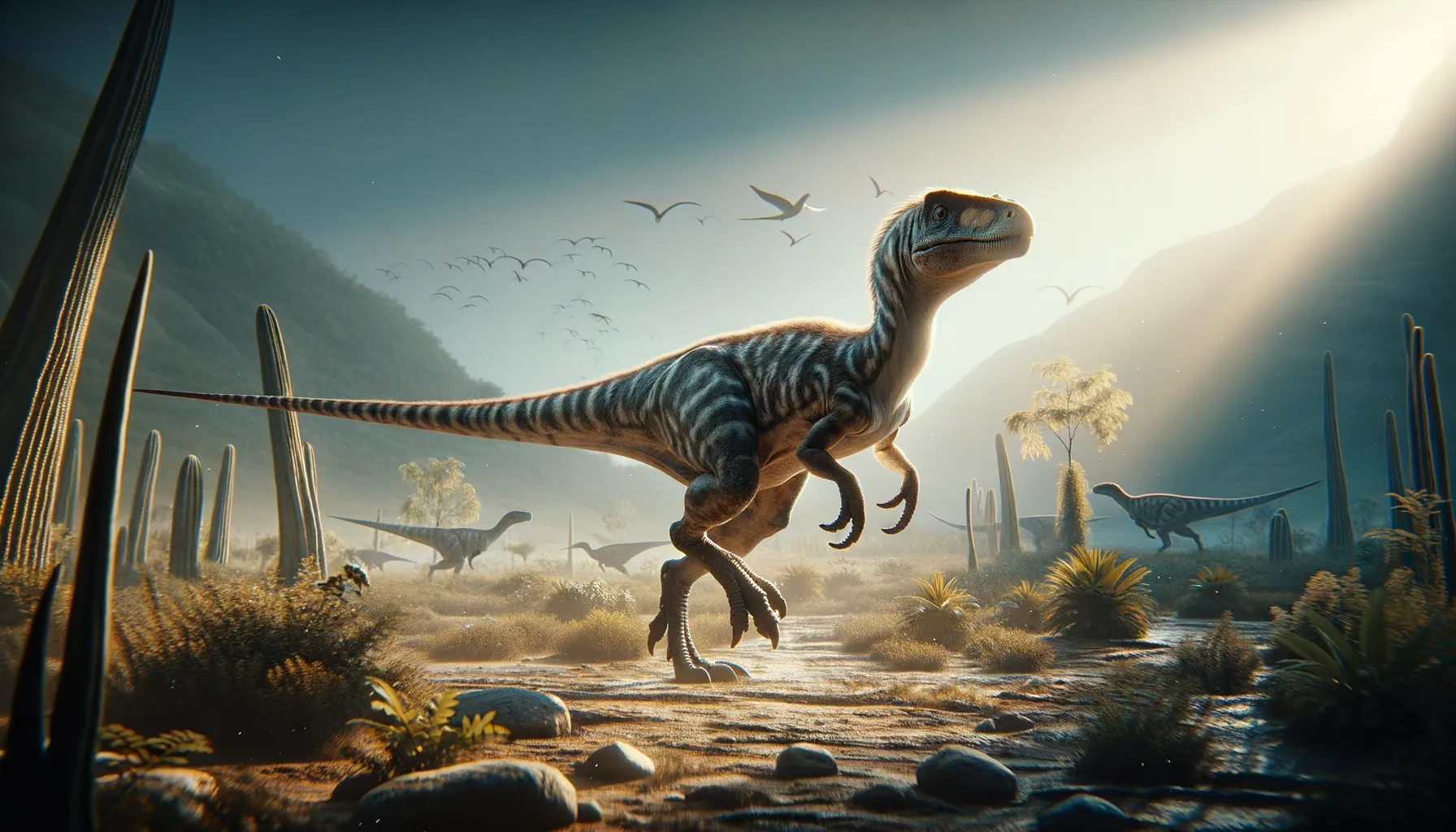
Eodromaeus
Swift and sleek, a dawn runner supreme.
Period
Triassic
Length
Measured around 1.2 meters in length.
Height
Stood about 0.5 meters tall at the hip.
Weight
Weighed approximately 4 to 6 kilograms.
Eodromaeus is a small, agile dinosaur from the late Triassic period, about 230 million years ago. Its name means 'dawn runner,' reflective of its swift movements. This early dinosaur was pivotal in understanding the evolutionary transition from early reptiles to its more advanced cousins. With its lightweight body and bipedal stance, Eodromaeus was well-adapted to its environment.
Diet
Eodromaeus was a carnivore, primarily feeding on small animals and insects. Its sharp teeth and agile movements made it an adept hunter, swiftly capturing its prey in the dense vegetation.
Hunting
Eodromaeus likely hunted by using its speed and agility to catch small, quick-moving animals. It used stealth and surprise to approach its prey before striking with precision.
Environmental challenges
Living in the late Triassic, Eodromaeus faced a rapidly changing environment with fluctuating climates. The landscape was transforming, with volcanic activity and shifts in vegetation influencing its habitat. Competition from other evolving species also posed challenges as it vied for food and territory.
Speed
Eodromaeus was a fast runner, aiding in its survival.
Lifespan
Estimated to live around 10 to 15 years.
First discovery
Discovered in the Ischigualasto Formation, Argentina, in 1991.
Fun Facts
- Eodromaeus is known as the 'dawn runner' because it lived during the early stages of the dinosaur era, about 230 million years ago.
- This dinosaur was only about the size of a dog, measuring around 4 feet in length and weighing approximately 15 pounds.
- Eodromaeus was a fast runner, likely using its speed to hunt small prey or escape larger predators.
- It is considered one of the early relatives of more famous carnivorous dinosaurs like Tyrannosaurus rex.
- Eodromaeus had strong hind legs, which helped it to move quickly and hunt effectively.
- Fossils of Eodromaeus were discovered in the Ischigualasto Formation in Argentina, giving us valuable insights into early dinosaur evolution.
- Despite being a meat-eater, its lightweight and agile body meant it was not at the top of the food chain.
Growth and Development
Eodromaeus likely grew quickly to reach a size where it could defend itself against predators. Like many early dinosaurs, it was born small and vulnerable but developed rapidly during its juvenile stage. The growth rate suggests it achieved maturity relatively young, which was crucial for its survival.
Habitat
Eodromaeus inhabited forested areas with plenty of cover to hide from predators. The Triassic landscape would have been lush with diverse flora and fauna, ideal for an active hunter. Rivers and streams provided vital resources such as water and supported a varied ecosystem.
Interaction with other species
Eodromaeus interacted with a variety of other early dinosaurs and fauna. As a small predator, it needed to be wary of larger carnivorous dinosaurs and other predators. It might have engaged in territorial disputes or competed for food with similar-sized species.
Natural lifespan
Eodromaeus had a natural lifespan of about a decade.
Reproduction
Eodromaeus likely laid eggs, similar to other early dinosaurs, with nests hidden among the vegetation. Parental care, if any, was minimal, leaving the young to fend for themselves soon after hatching.
Social behaviour
Eodromaeus may have been solitary or lived in small groups to enhance hunting efficiency. Cooperative hunting or defensive behavior could have increased its survival chances against larger predators.
Fossil locations
Fossils of Eodromaeus have primarily been found in the Ischigualasto Formation in Argentina. This discovery site is rich in Triassic dinosaur fossils, providing valuable insight into early dinosaur evolution.
